I love the episodic storytelling used in Apex Legends–it’s a big reason why I’m still logging into the game every week after five years. How developer Respawn has told this story has changed numerous times since 2019, ranging from social media posts and evolving in-match quips to datamining bamboozles and a YouTube miniseries. The battle royale’s story is always changing and evolving in both how it’s told and what it’s focusing on, shifting most recently by killing off a long-standing major villain who worked outside of the Apex Games and introducing a brand-new baddie who’s actually competing against the legends in the arena, Alter.
The lore is ever-growing as each new season brings with it new characters, locations, or storylines, becoming harder for new players to grasp what’s going on. As a player looking at it from the outside, writing for any live-service game seems like a Sisyphean task–like the game itself, the story has to just keep going and presumably the narrative as a whole becomes increasingly unwieldy. Having to tell an endless story is at odds with how storytelling traditionally works in practically every medium, and there’s the added complexity of needing such a story to evolve in a way that supports the ongoing development of a video game and any changes in its mechanics.
You need a javascript enabled browser to watch videos.
Click To Unmute
ShareSize:640 × 360480 × 270
Want us to remember this setting for all your devices?
Please use a html5 video capable browser to watch videos.
This video has an invalid file format.
00:00:00Sorry, but you can’t access this content!
Please enter your date of birth to view this video
JanuaryFebruaryMarchAprilMayJuneJulyAugustSeptemberOctoberNovemberDecember12345678910111213141516171819202122232425262728293031Year20242023202220212020201920182017201620152014201320122011201020092008200720062005200420032002200120001999199819971996199519941993199219911990198919881987198619851984198319821981198019791978197719761975197419731972197119701969196819671966196519641963196219611960195919581957195619551954195319521951195019491948194719461945194419431942194119401939193819371936193519341933193219311930192919281927192619251924192319221921192019191918191719161915191419131912191119101909190819071906190519041903190219011900
By clicking ‘enter’, you agree to GameSpot's
Terms of Use and
Privacy Policy
Now Playing: Apex Legends: Double Take Collection Event Trailer
To better grasp what it’s like to put a story like Apex Legends’ together, I spoke with lead writer Ashley Reed. We talked about how Season 13’s Newcastle was originally planned for Season 7, how lucky happenstance plays a huge part in telling the game’s story, and how–at one point–the plan was for Apex Legends to get multiple new legends per season.
When it comes to writing Apex Legends, how far ahead are y’all? Are there efforts to not have too much of each season’s story pre-written or does that not matter much?
There’s layers to it. There’s–I almost want to call it the meta layer–the layer that may never exist. The layer where, when we create our characters, we’re like, “Okay, this is this person, and in a traditional story, what is their arc?” Because that helps determine what this character wants, and what this character does not have. And that’s what makes them interesting. For most of the characters, we have an idea of, if we were to snap our fingers and do the movie version, how [their story] would end. But that can transform over time because [a live-service game] is a living, breathing thing, and a lot of those endpoints have changed pretty significantly over time. A couple of them have already happened, like Pathfinder’s endpoint happened when he found his creators. So now he has a new adventure to go on.
So there’s that level, and then we will start integrating fairly early with the content in new seasons. We usually know about a year in advance the gist of what a season is going to be, so we’ll start engaging with that like, “Okay, what’s the narrative that can go with this thing that you’re working on? Does it need a narrative? Does it fit with this aspect of the universe? Could one of the existing characters be an announcer for whatever this is?” We don’t like waiting until the season before because then it feels very rushed and our timelines for recording dialogue are actually quite long. I think I can say this. I think it’s okay. Right now, we are finishing dialogue for Season 23.
Oh, wow. And we’re still in the middle of Season 21 right now.
Yeah. So we have to know exactly what the characters are going to need to say now. It was a couple of weeks ago when we started writing it. So we don’t want to wait until too far after this at all. We’d really like to have some idea of what we’re doing with the story before that. But because we know where we’ve been, we know where we’re going, and we can have the scaffolding in place for the general gist of what the story’s going to be.
I’m still using this wrong, but the meta narrative level is really helpful because we’ll know the trajectory for a character or a place or something like that. And then as new information is introduced, we’re like, “Oh, that fits. That happens to work.” We have this thing internally that we call “seamless storytelling,” which means something happened by happenstance that fits perfectly with something we wrote before and we’re like, “Nailed it.” Actually, a funny story: We were working on Catalyst–the personality, the proclivities, and the interesting crystals and all that–and it just so happens, completely separately, the map design team was working on a moon map.
Wait, so Catalyst and Broken Moon–despite seemingly being built in tandem and narratively fitting together perfectly–were each designed separately?
There are times like that where it’s an amazing happy accident. But I will say, like Edna from The Incredibles, “Luck favors the prepared.” If you’ve got an eye out for that stuff, you can grab onto it and move by.
How did the shift in Apex Legends’ content pipeline affect the writing process for legends and the story overall? Y’all used to have to get a new legend ready to go with a story and everything every season, and a brand-new map every four seasons.
It’s true, we did. And it’s funny because you probably would’ve thought it was solely a team health measure because maps and legends are our highest lift–they take a very long time to do. I think conservatively, each legend from their very, very starting point to launch is a year at least of really consistent work. Same with maps. Maps take a full year to do. So they are a very heavy lift and we love them, we love working on them, but that cadence was very difficult. There was a dream when Apex first launched to actually release new legends more frequently.
More frequently? Do y’all hate yourselves?
Oh, very quickly we figured out that nope, nope, nope–not going to be possible to do it to the level that we were happy with. That was becoming so much of a grind that as much as we loved, it risked burning people out. So [team health] was one of the measures. But also we did start to see–and I’m no expert in this–but around Season 12, people actually being like, “Oh my God, stop adding characters.” When Mad Maggie showed up, they were like, “I am having trouble keeping up with the constant changes to the meta in this game because the new characters keep getting added.” So we actually got feedback that people were like, “Stop adding people.” We’re like, “Oh, okay, okay.” So from a storytelling perspective, the characters and maps are obviously a very easy thing to hang your hat on. They’re the center of everything at that point because they’re very new, very big, very heavy in content and there’s a lot you can do with them.
So doing them less is a loss, but at the same time, it can be a bit of a crutch because the same way people are saying, “Hey, I’m having trouble keeping track of the game because there are so many new characters,” there’s also, “Well, what about my fave? You haven’t done content for my fave in a long time,” which we’ll acknowledge. We’re like, “Oh God, so-and-so hasn’t gotten any new stories.” So it gives us time to actually sit with the existing characters and do more with them. And obviously we still want to keep adding new characters, but we don’t want to abandon the characters that people already love and really identify with.
I am, in fact, one of those players. Please refocus the story back on Vantage. Not so that we learn more about her–she’s great and all–but so that her mom comes back into the spotlight. I really want to know more about Vantage’s mom.
I like that you love her because that’s, I would say, one of our biggest difficulties. We do want the characters to have lives outside the [Apex Games]. But there’s a not insignificant portion of the fan base who don’t consume additional content–and that’s fine–but then they get in and they’re like, “Who are they talking about?” The only relationships they’re aware of are between the characters. And we’re like, “We don’t want to just have characters who only interact with each other and have no work-life balance, but what is that happy medium of not emphasizing outside characters too much so if you just play the game, you still get the experience, and everybody feels fully fleshed out?” But I do appreciate that you like the NPCs because it’s very easy for us to not focus on them.
Though, sometimes when y’all do, it’s to really bamboozle us. Like when Bangalore started really coming back into the spotlight after Season 9 and it gives us a chance to learn more about Jackson. And then a few seasons later, you’re like, “Haha, got you! He’s a playable character now named Newcastle.”
I thought we were almost overplaying our hand on it. I’m glad we got to do that whole Bangalore story. We were thinking about that pretty hard for a while. God, I think we were talking about Jackson early, but I think there were active efforts to get him in as early as Season 7.
That’s a lot earlier than Season 13. So why release Horizon, Fuse, Valkyrie, Seer, Ash, and Mad Maggie first if you’re trying to get Newcastle in there?
Basically we were looking for a kit that would suit him, and some kits would pop up in playtesting and we were like, “That feels right,” but then they would just not play very well, so they went away. But then, finally, in Season 13, we were like, “This is the one. This is the guy.” But there were active attempts to get Jackson in there. [His relationship with Bangalore] is too juicy. This relationship is too perfect. There’s a few important NPCs that I think would be a struggle to put in. We’ve said that Horizon would never shoot [her son] Newton. I don’t think Ballistic would struggle shooting his son–I think he’d be a little more open to it. Nathan is also a fully grown man who has a bone to pick.
You’ve spoken on this a bit, but when looking at Apex Legends’ story, it feels like Seasons 1-7 are pretty heavily focused on the legends interacting with each other in the arena and then Seasons 8-18 shifted focus to follow the legends’ lives outside of it. Is the focus of the story going to remain pretty firmly on the legends’ lives outside of the arena going forward, or do y’all have plans to shift the perspective again?
I don’t want to speak too far in the future because obviously anything can change. I really love the IP, so there’s a lot that you can do with the IP. Obviously there’s been three different games in this space with three wildly different places. So there’s a lot that I think can be done in this universe, but for Apex Legends itself, the game, I do think we have interest in shifting back to the in-arena interactions because that’s where most people’s experience is. It was really cool to be able to look at what the characters’ interactions are outside the sphere. And I do think we still want to talk about that to a degree. We do want the characters to feel well-rounded and they’ve got other things going on because if they’re just faceless avatars in this arena, then that’s not Apex.
Obviously, we have experimented with doing things outside [the Apex Games]–a big bad villain who exists out there and isn’t someone who actually fights in the games. But then we realized that wasn’t integrating with the actual game that people play. So that’s why the change in direction that we’re headed, the new thing we want to try out. You can see those ebbs and flows of we did this, now let’s try this.
Apex Legends’ story has always been told in other mediums–social media, comics, a mobile game for a while–how do y’all keep track of all that?
We have a wiki that got built that keeps track of all this information, and we have a lot of internal documents that wiki summarizes. It’s good that we have a team because we can reference each other and be like, “Hey, do you remember what this was? Did we say this? Can you triple check the names of all of Bangalore’s brothers? Where did we say Xenia was from again?” We will crowdsource the information amongst each other because it is a lot to keep track of, but the wiki and our internal documents make it a little bit easy. But they are huge. We’re very careful about triple-checking ourselves to make sure we don’t wreck anything.
This interview was edited for both brevity and readability.
13 Apex Legends Features Respawn Needs To Steal From Apex Mobile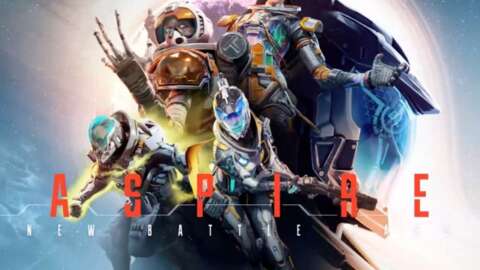
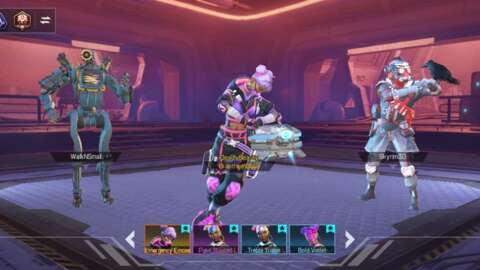
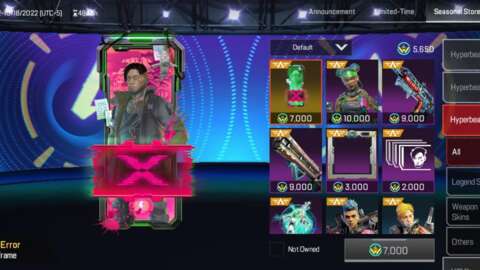


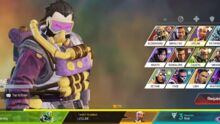
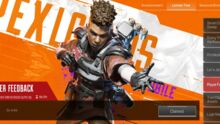 See More
See More




